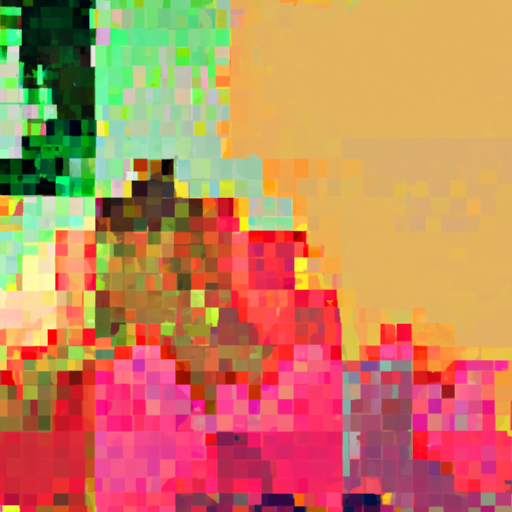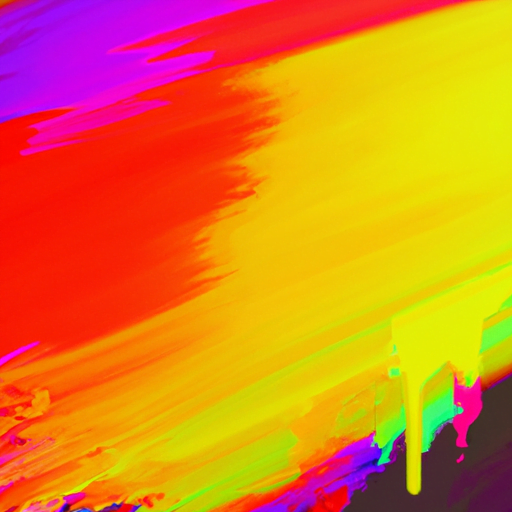
-
Table of Contents
- AI-Generated Textures: Enhancing Depth in Graphic Design
- The Power of Textures in Graphic Design
- The Traditional Approach: Manual Texture Creation
- The Rise of AI-Generated Textures
- Case Studies: AI-Generated Textures in Action
- 1. Nike: Flyknit Textures
- 2. Adobe: Substance Designer
- The Future of AI-Generated Textures
- Conclusion
AI-Generated Textures: Enhancing Depth in Graphic Design

Graphic design is an ever-evolving field that constantly seeks new ways to captivate and engage audiences. One of the most effective techniques to achieve this is by incorporating textures into designs. Textures add depth, visual interest, and a tactile quality to graphic elements, making them more visually appealing and memorable. Traditionally, designers have relied on manual techniques to create textures, but with the advent of artificial intelligence (AI), a new era of texture generation has emerged. AI-generated textures offer designers a powerful tool to enhance their work, providing a wide range of possibilities and saving valuable time. In this article, we will explore the world of AI-generated textures, their benefits, and how they are revolutionizing the field of graphic design.
The Power of Textures in Graphic Design
Textures play a crucial role in graphic design, as they can transform a flat and lifeless design into a visually captivating masterpiece. By adding textures, designers can create a sense of depth, realism, and tactility, making their designs more engaging and memorable. Textures can be used to evoke emotions, convey a specific mood, or enhance the overall aesthetic appeal of a design.
For example, consider a website design for a luxury hotel. By incorporating a subtle linen texture in the background, the design instantly conveys a sense of elegance and sophistication. Similarly, a grungy texture can be used to create a vintage or edgy look, while a watercolor texture can add a soft and artistic touch to a design. The possibilities are endless, and textures provide designers with a powerful tool to communicate their intended message effectively.
The Traditional Approach: Manual Texture Creation
Traditionally, designers have relied on manual techniques to create textures. This process involves either sourcing existing textures from stock libraries or creating them from scratch using various tools and techniques. While manual texture creation allows for a high level of customization and control, it can be time-consuming and labor-intensive.
Designers often spend hours searching for the perfect texture or experimenting with different techniques to achieve the desired effect. This manual approach can be a significant bottleneck in the design process, especially when working on tight deadlines or large-scale projects.
The Rise of AI-Generated Textures
With the advancements in artificial intelligence and machine learning, designers now have access to a new and exciting tool: AI-generated textures. AI algorithms can analyze vast amounts of data, learn patterns, and generate textures that mimic real-world materials with remarkable accuracy.
AI-generated textures offer several advantages over traditional manual techniques:
- Time-saving: AI algorithms can generate textures in a matter of seconds or minutes, significantly reducing the time spent on texture creation.
- Endless possibilities: AI algorithms can generate an infinite number of unique textures, allowing designers to explore new creative directions and experiment with different styles.
- Consistency: AI-generated textures ensure consistency across designs, as they can be easily replicated and modified to fit different projects.
- Realism: AI algorithms can analyze real-world textures and replicate their intricate details, resulting in highly realistic and believable textures.
Case Studies: AI-Generated Textures in Action
Let’s take a look at some real-world examples of how AI-generated textures have been used to enhance graphic design:
1. Nike: Flyknit Textures
Nike, a global leader in athletic footwear and apparel, used AI-generated textures to create the iconic Flyknit series. Flyknit shoes are known for their lightweight and breathable design, made possible by a unique knitting technique. To showcase the intricate patterns of the Flyknit material, Nike used AI algorithms to generate textures that mimic the look and feel of the fabric. The AI-generated textures added depth and realism to the product visuals, enhancing the overall visual appeal and helping customers visualize the product’s unique features.
2. Adobe: Substance Designer
Adobe, a leading software company, developed Substance Designer, a powerful tool for creating AI-generated textures. Substance Designer allows designers to generate a wide variety of textures, including wood, metal, fabric, and more. The tool uses AI algorithms to analyze real-world materials and generate textures that replicate their characteristics. Substance Designer has become a go-to tool for many designers, enabling them to create realistic and high-quality textures in a fraction of the time it would take using traditional manual techniques.
The Future of AI-Generated Textures
The field of AI-generated textures is still in its early stages, but the potential for growth and innovation is immense. As AI algorithms continue to improve, we can expect even more realistic and diverse textures to be generated. Additionally, AI-generated textures can be combined with other AI-powered tools, such as image recognition and style transfer, to create entirely new design possibilities.
Furthermore, AI-generated textures can be customized and tailored to specific design needs. Designers can input parameters such as color, scale, and pattern, and the AI algorithms will generate textures that meet those specifications. This level of customization opens up endless possibilities for designers to create unique and personalized textures that align with their creative vision.
Conclusion
AI-generated textures are revolutionizing the field of graphic design by offering designers a powerful tool to enhance their work. These textures provide depth, realism, and visual interest to designs, making them more engaging and memorable. With the ability to generate textures in a fraction of the time it takes using traditional manual techniques, designers can save valuable time and explore new creative directions. As AI algorithms continue to advance, we can expect even more realistic and diverse textures to be generated, opening up endless possibilities for designers to create visually captivating designs. AI-generated textures are undoubtedly a game-changer in the world of graphic design, and designers who embrace this technology will have a competitive edge in the industry.
